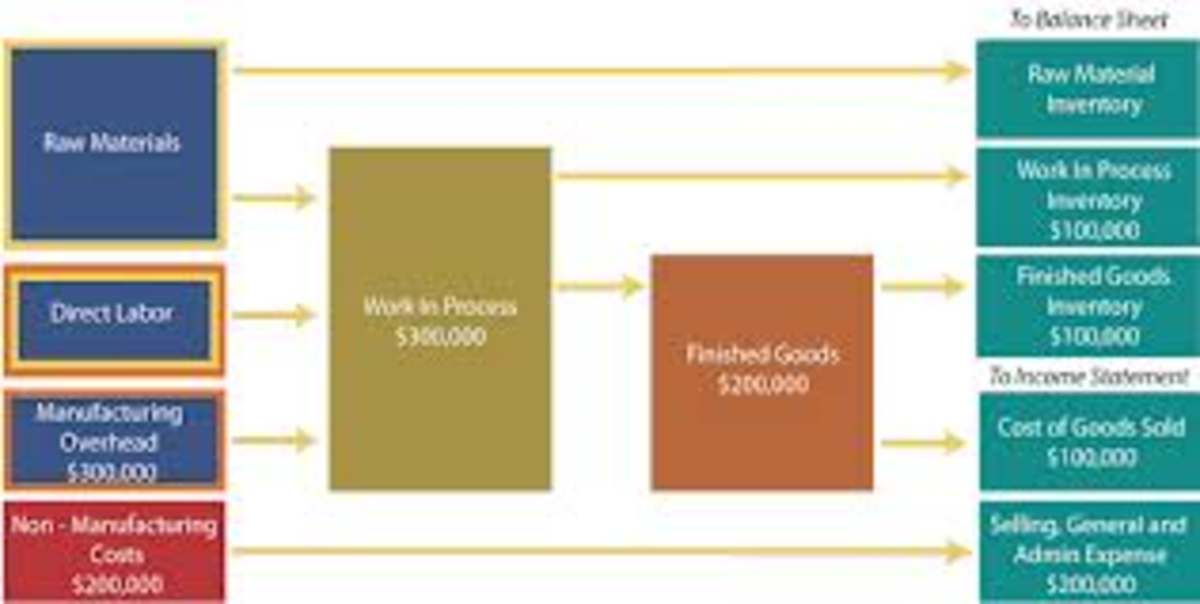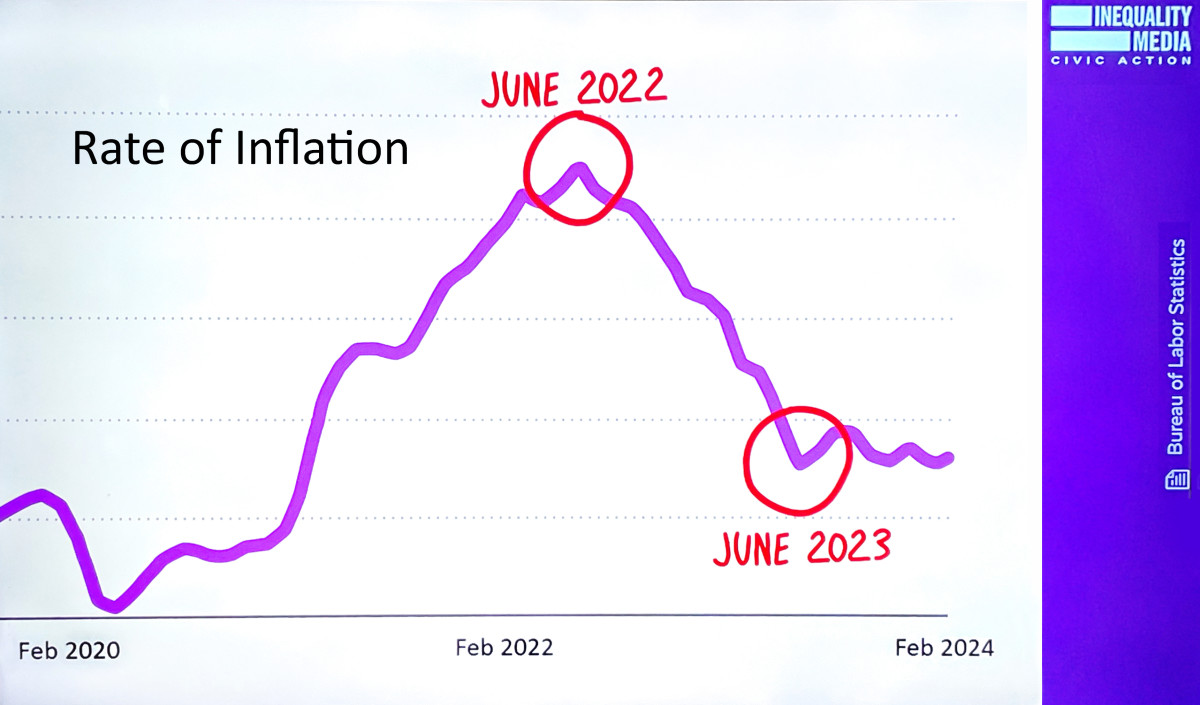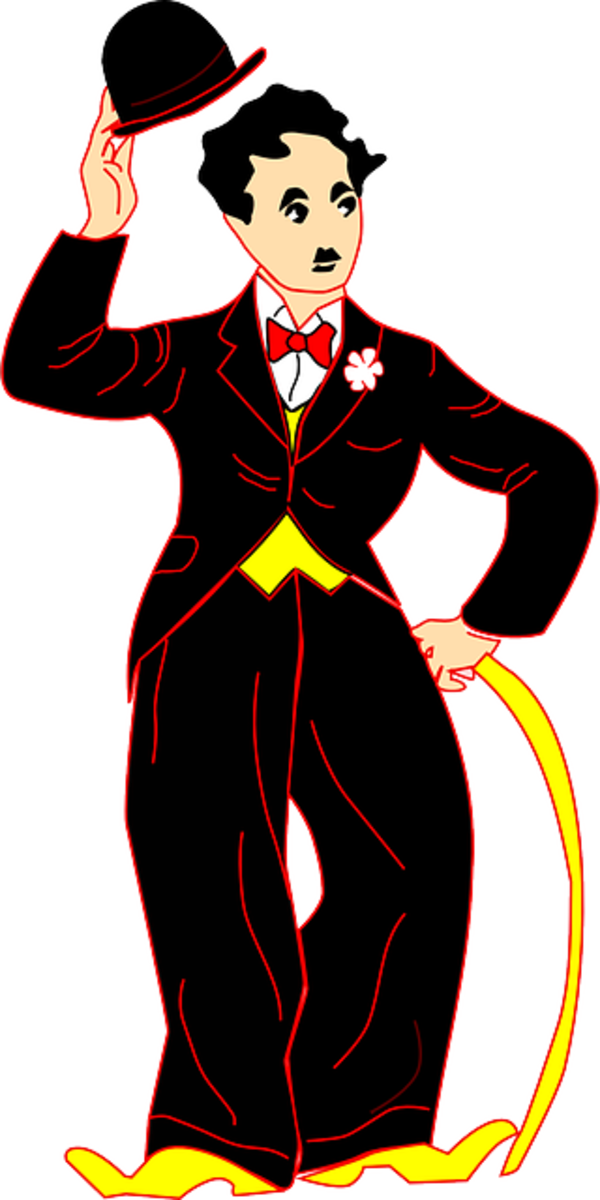The Theory of Manufactured Deficits (Part 1)
Manufacturing deficits depends on the ability to manipulate specialization.
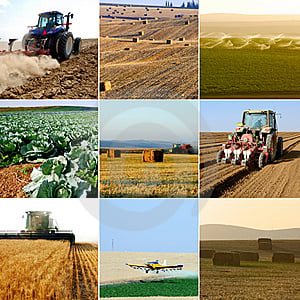
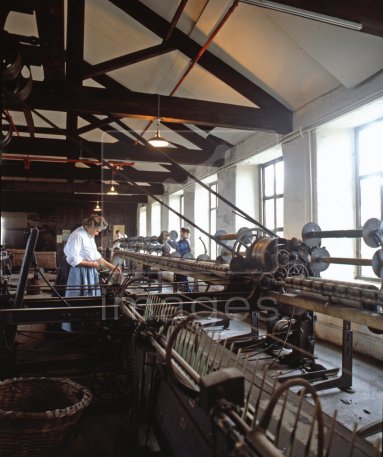

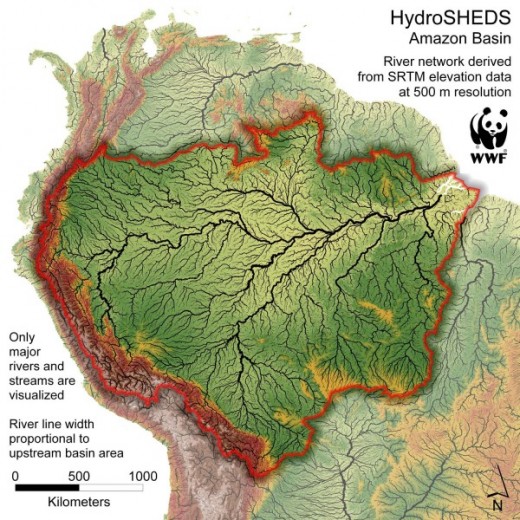
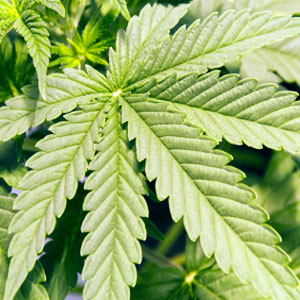
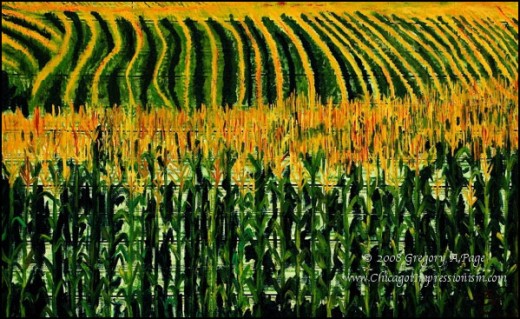
Manufacturing a deficit is one method to creating profit by decreasiing supply.
At first glance, manufacturing a deficit may sound like a contradiction in terms as most people would be interested in creating a surplus rather than want. But if you consider that a profit can be made by making something scarce, then the concept of a manufactured deficit becomes more plausible. Add to this the need for capitalists to find or create new markets, you end up with disaster capitalism that can profit from disasters natural and man made. The concept of manufacturing deficits has as it roots the production of surplus value in the way of agricultural goods. Surplus value is also a fact of nature and predates homosapiens to the dawn of life. The earth has always had seasons and climate change and one way life adapted was to gather surpluses for lean times. Original surpluses in early human history allowed for some of the population to leave agricultural pursuits and follow other ways of making a living. This was the foundation of the development of civilization. For the current cycle, this occurred some 6,000 years ago. One can say that the production of surpluses in agriculture liberated some to pursue new ideas that were impossible to implement in times when there was no surplus and when folks had to live hand to mouth in hunting-gathering societies and groups. Once agriculture became established and an abundance of food was a reality in places like Egypt, Bengal, Mesopotamia and Central America, then complex civilizations began to flower. An abundance of food also allowed for population expansion and with that expansion into surrounding territory. This expansion often meant encroaching on the lands of others and as a result, those skilled in combat were needed. As methods of growing food became more efficient, more and more folks found their way into other pursuits to make a livelihood. The transition was not always easy, nor favoring those who formerly made their living farming. This difficult transition is seen today in China were peasant farmers are forced off the land to make way for hydro-electric plants, new cities or heavy industry. As machines of increasing sophistication entered into the production of food, even more people were forced to sell the only thing they had; their labor power and this to those who were already established in non-agricultural pursuits. As the industrial revolution swept the developing bourgeois world into prominence, a new phenomena sprung up; the army of the unemployed. This “army” forced from the land into destitution within the sprawling ghettos and slums of burgeoning bourgeois cities became the seed to drive down the incomes of those who where “lucky” enough to have “gainful” employment. This phenomenon was first identified and described by Karl Marx. It is this phenomenon that set the archetype for different aspects of society, like housing and food availability, which has resulted in artificially manufactured shortages of all types in order to manipulate and profit from the masses.
The bourgeoisie were and are, also aware of this. For the early bourgeois elements developed this tactic to increase their profits at the expense of everyone else. Building of profit is crucial for building wealth and for obtaining and securing power. Further, this concept of artificially manufactured surpluses and deficits has been extended to cover every facet of our lives, from food, to water, from economics and education, goods to housing. We live in a world today that is fraught with planned obsolesce, poverty, malnutrition, homelessness, inflation, devaluation, ignorance and the shock doctrine. How did it get this way? The answer is simple and there is a template that can be applied to any field of enquiry or endeavour as experienced in the contemporary politic.
Recall that the first surplus was agricultural and this liberated many to pursue new developments, careers, ideas and livelihoods. It is agricultural surpluses that developed primarily in fertile regions like ancient Egypt, Bengal, Central America Mesopotamia and other regions that allowed for freedom, the pursuit of other activities and the expansion of population. At first, it was a healthy development, until agricultural specialization, born of competition set in and changed everything. In the earliest days of the industrial revolution, there was competition for growing space for single crops, be it something like sheep, cows, horses or a profitable crop. This has brought us to the current situation of mono-culture agriculture and factory farming specifically designed to be mechanized where only a few hands are needed to run the entire enterprise. In the not too distant past, some 98 percent of the population was engaged in some aspect of agriculture. In the industrial world, that figure is now only 2 percent, which means that the other 98 percent are doing something else. That something else covers the gamut of activity from mining, the military, manufacturing, legal, banking, etc. All of it has depended on another clever invention; the idea of abstracted labour value using money as the medium of trust and exchange.
The entrepreneur and profiteer have always aimed to buy cheap and sell dear, in order to advance their own fortune. We have built an entire society based on this formula. What does this mean to the ignorant? It means that they always lose in order for the few to profit and grow rich and by implication, powerful due to the ability to hire and fire by virtue of that desirable wealth. There are many means to achieve this from over-worked under-paid jobs to a multitude of scams to manipulating the value of floating currencies by a multitude of ways. There are several tools to do this being interest charges to short supplying. Manipulating of the money supply has already been examined in “Funny Money and Real Value”. We examine the short supply side of the equation, the first of which was shortness of job opportunities as recognized and defined by Marx when he defined the army of the unemployed being kept in reserve to keep down the wages of those who are employed. The worker has attempted to reverse this by unionizing, striking, boycotting, etc. The unions eventually became corrupt and the workers wound back up in a position like that of the beginning of the struggle even to the point of the total destruction of the unions. The so-called gains of unemployment insurance and welfare were even scaled back and eliminated in order to create an imposing, intimidating and impressive body of absolute destitution. In the era of job exportation, on the pretext of a collapsed economy, cheaper labour was found off-shore and the wealthy got bailout funds at home, while domestic labour suffered deprivation. This presence has served to drive down wages and increase housing prices. Also, work visa immigrants are smuggled in to work for far cheaper income than is paid to workers native to the region to enhance the effect. It is a double edged economic sword where the top entrepreneur gains both ways, i.e., via decreasing expenses through paying out less and increasing housing costs, usually funded by credit at high interest, creating a gain within a gain. The whole of this has been manufactured carefully in order to cull the maximum value of the masses. Insufficient and inadequate housing is part of the formula to keep prices high. Having a handy supply of homeless people strewn about in plain sight and increasing the demand for housing drives up the prices so much that the ones who can obtain shelter must decide to cut back elsewhere. An influx of cheap workers on work visas by the bosses adds to this situation. The similarity of this formula to the lack of jobs formula is striking. But work and housing shortages are by far, not the only example of such a thing. One can take this formula and apply it thoughtfully to any other endeavour one chooses.
When we want something special, it often means that others have to do without what is needed.
What is your favourite cash crop?
Short supplying food is done for a number of reasons in addition to profiteering. It is done in warfare to harass the enemy or to starve out the enemy. When Europeans took over the new world by storm, one of the tactics employed was to destroy the food base of the people who were living in the areas being pioneered. This was most noticeable with the destruction almost to extinction of the bison upon which the plains nations depended for food. The result was starvation for tens of millions of people. The Europeans introduced their own cattle to replace the bison continent wide. Of course they maintained strict control of the steer and bulls imported to replace the bison. Fortunately for the bison, the 50 or so individuals that escaped the slaughter were rounded up and brought back from the brink of extinction by breeding them in captivity. The herds are now growing, but are exploited for profit, just like the imported cattle. Another instance is the attempt to spread swine flu to Cuba after the revolution there in a bid to starve the people and crush the new regime. Swine flu has made a comeback, but now to terrorize the domestic population into spending vast sums of money for preventative vaccination of questionable value for what is a mild disease for most. That bid in Cuba proved unsuccessful; but at home decades later, it has created an atmosphere of draconian reaction on the job where people can now be fired for coughing. There or other examples, such as the food for oil program in Iraq as imposed by the US, where most people don’t even see the food, even though the oil is taken. But this is one aspect only of a complex web of chicanery. Other tactics are cash crops displacing local food crops and the destruction of food surpluses to keep prices artificially high. In February of 2010, Belgian farmers dumped tens of millions of gallons of milk over lost subsidies. That meant that it was not available for hungry people.
Many regions of the world such as Africa and in the Amazon basin, traditional food crops are displaced by cash crops that fetch a greater income from factory farms that are set up in the region. These farms were assembled from peasant holdings or exist superimposed on peasant holdings. Sometimes the peasants are violently cleared out and agri-business just takes over. Sometimes they are done on land cleared from primeval forest growth such as in the Amazon basin. Often single crops are grown at the expense of food crops that could feed local populations as was done traditionally. Sometimes the crops grown are illegal substances that can fetch a lot of cash due to being controlled substances. Often, the mega farms are built by expelling the peasants from the land to grow cattle for the US, Canadian and European markets. The people have nowhere to go except the slums to eke out a living from mining or in miserable toxic factories if such work is available. Sometimes the peasants are encouraged to grow cash crops for the extra money that they can earn and use. Whatever the case, local food resources shrink and many people are forced to subsist of marginal land by old hunting-gathering methods. This then is a manipulated shortage that drives up prices of local food out of the reach of most locals resulting in malnutrition, disease and opportunist drug sales.
Within the mostly mega-farms of N. America and Europe, sometimes a bumper crop occurs that drives down the value of the product. Farmers are then encouraged to either destroy excesses or to not grow at all in the next year, so that prices can be stabilized. They would rather destroy good food than give it to the needy; as was demonstrated with the dumping of several million gallons of milk in Belgium because it could not be sold for the asking price. This was a crisis of overproduction that resulting in huge waste ans needless starvation. The prices are kept artificially high and thus out of reach for many people, resulting in malnourishment and disease even in the developed world. The medical establishment is ever ready with new wonder drugs. Mega and factory farms are organized around machine harvesting and efficiency of operation for the least cost. The ones that grow produce are designed encourage the use of artificial chemical fertilizers to enhance growth, pesticides to control insects and single crops (monoculture) for the ease of machine harvesting. Crops are grown using chemicals of all sorts. No thought is given for nutrition and the needs the animals in factory farms that raise food animals like beef, pork, turkey, ducks, and chicken. Animals are crowded into massive barns and kept in enclosures where movement is kept to a minimum. To prevent disease, they are dosed with anti-biotics. They are given hormones to enhance and speed up growth. No thought is given to the trauma the animals endure in these mass raise to slaughter factories. All of this is translated to the table of most households in the world that buys food from super markets or fast food outlets. People eat, eat, eat, but are still hungry; and they get sick and head to the doctor or hospital if they can afford it or are covered by medical insurance. Others can’t even afford to get these inflated but non-nutritious products and must rely on handouts that are deteriorated a step further or even eat out of the garbage and landfills. A few people try to eat right by buying organic, but this is pricey and the name organic does not mean honest to God organic. It could be merely organic-wash business propaganda just to capture sales at higher prices for the same mass produced factory farmed inflated garbage product. It is becoming known that most businesses (up to 99 percent) use unscrupulous tactics to increase their profits. The problem is so pervasive as to evade effective control by inadequate inspection and policing. The bottom line for the average Joe is to either grow one’s own food or to know what to eat as far as wild food goes. But getting land to grow or the right and ability to hunt and gather is something else. The end result for most people is that they lose, lose, lose even when they super-size that order. They lose their money on questionable produce. They lose their health due to non-nourishing food filled with hormones, chemicals, pesticides and artificial fertilizers. They lose the skills of living naturally, hunting-gathering and growing their own food. They end up paying what is dictated by manipulation of the food market. If there should be a crop failure for various reasons, then the price of questionable quality food exceeds even that of prime organic or food that is the reserve of the wealthy such as caviar. No matter what the outcome, prices are kept high. Some people kept hungry drive the point of desperation home. Coupled with increasing fuel prices for fossil fuels due to carbon taxes, restricted supply, wars, the price goes ever higher, creating more artificial deficits. The whole thing spirals in intensified vigour ending with hyperinflation or stagflation. Yet, all of this was and is unnecessary. But for turning a profit, it is absolutely necessary! The choice becomes profit first or people first.
Continue from here:
http://hubpages.com/hub/Part-2-Theory-of-Manufactured-Deficits


